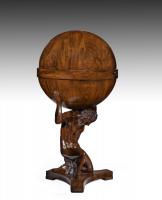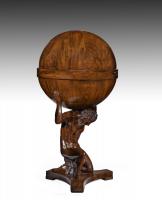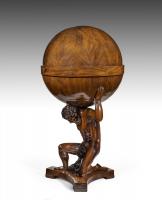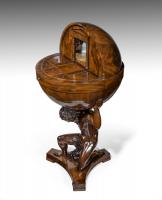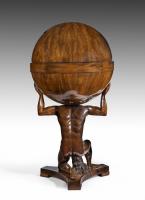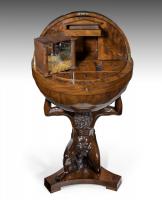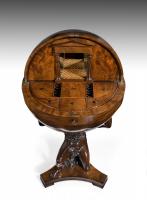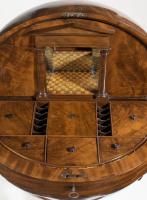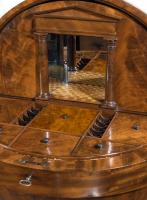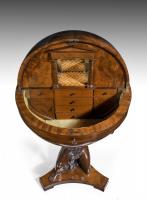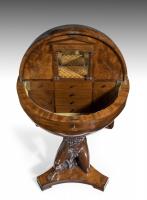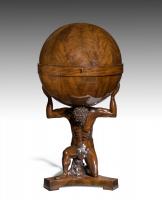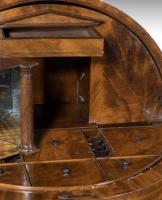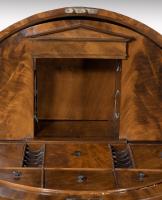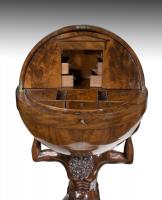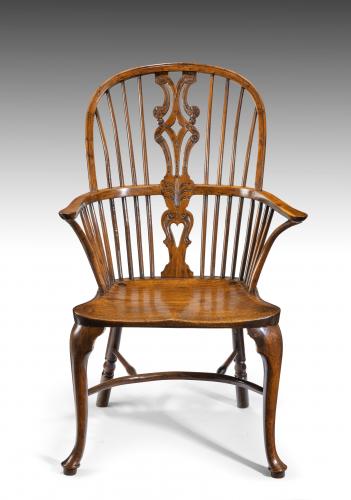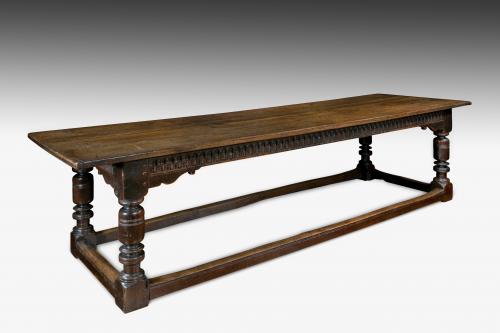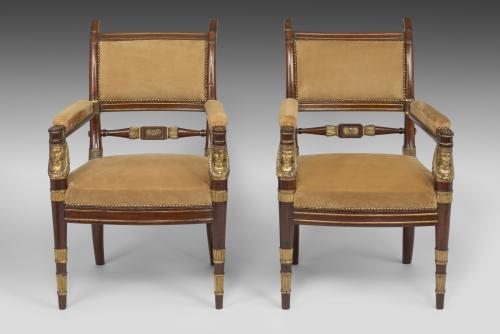
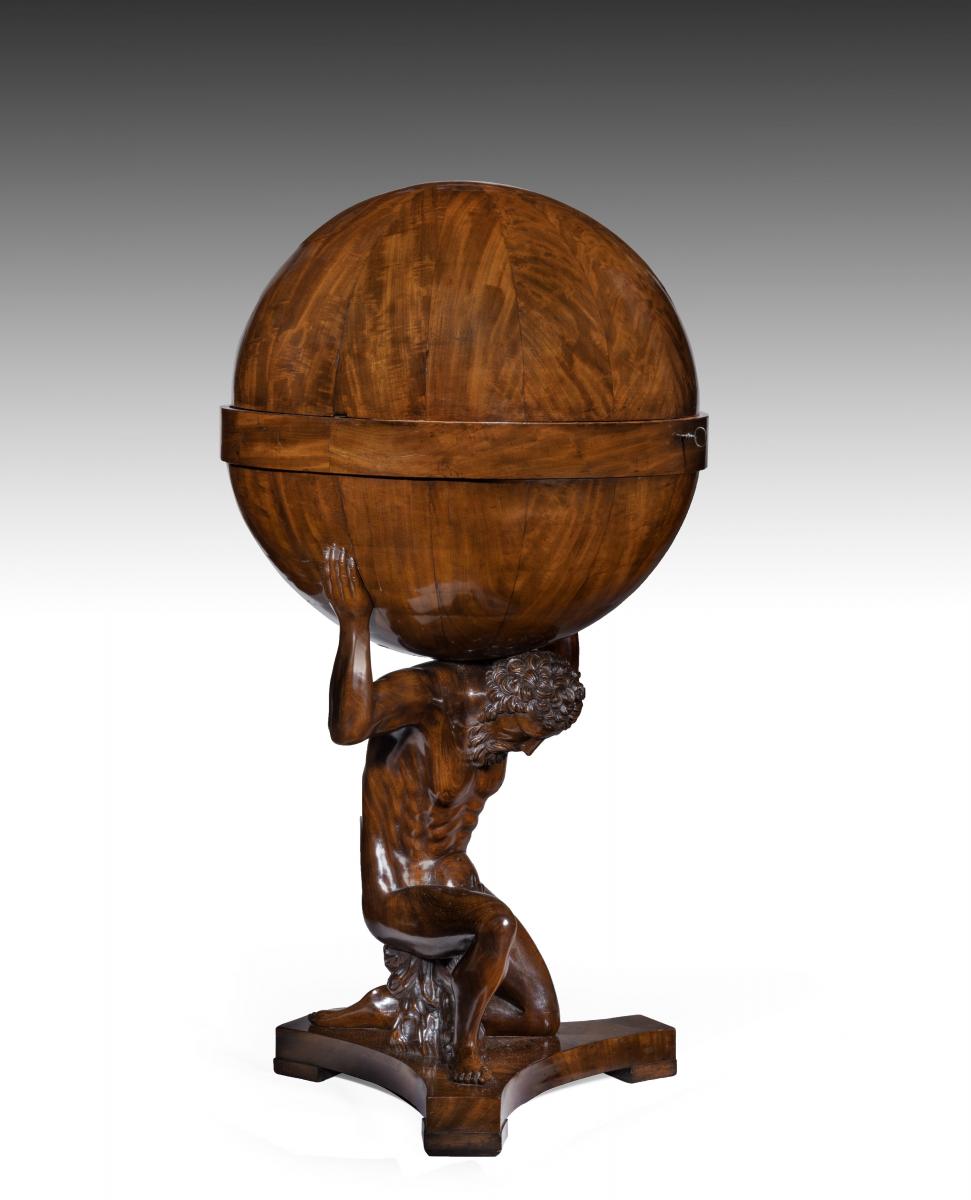
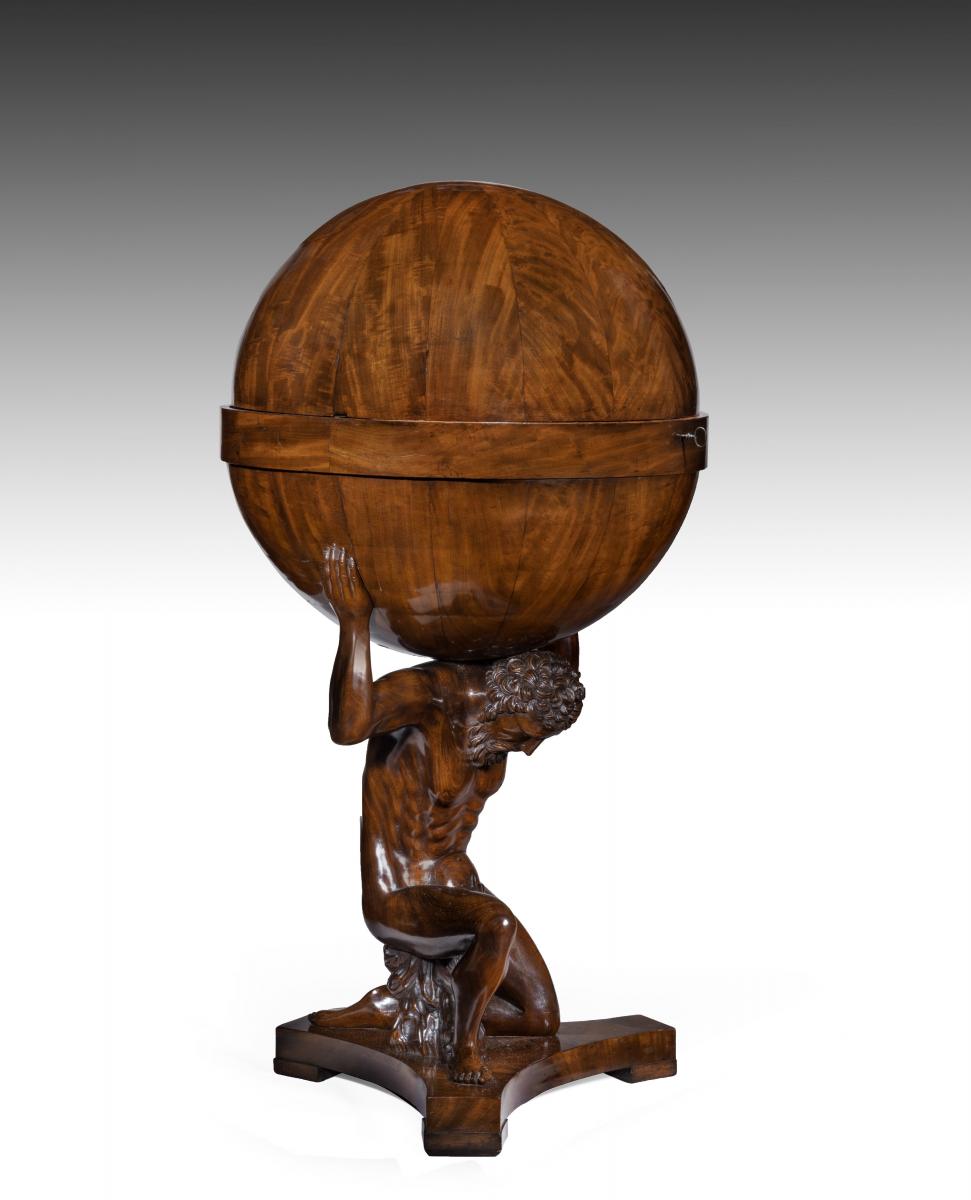
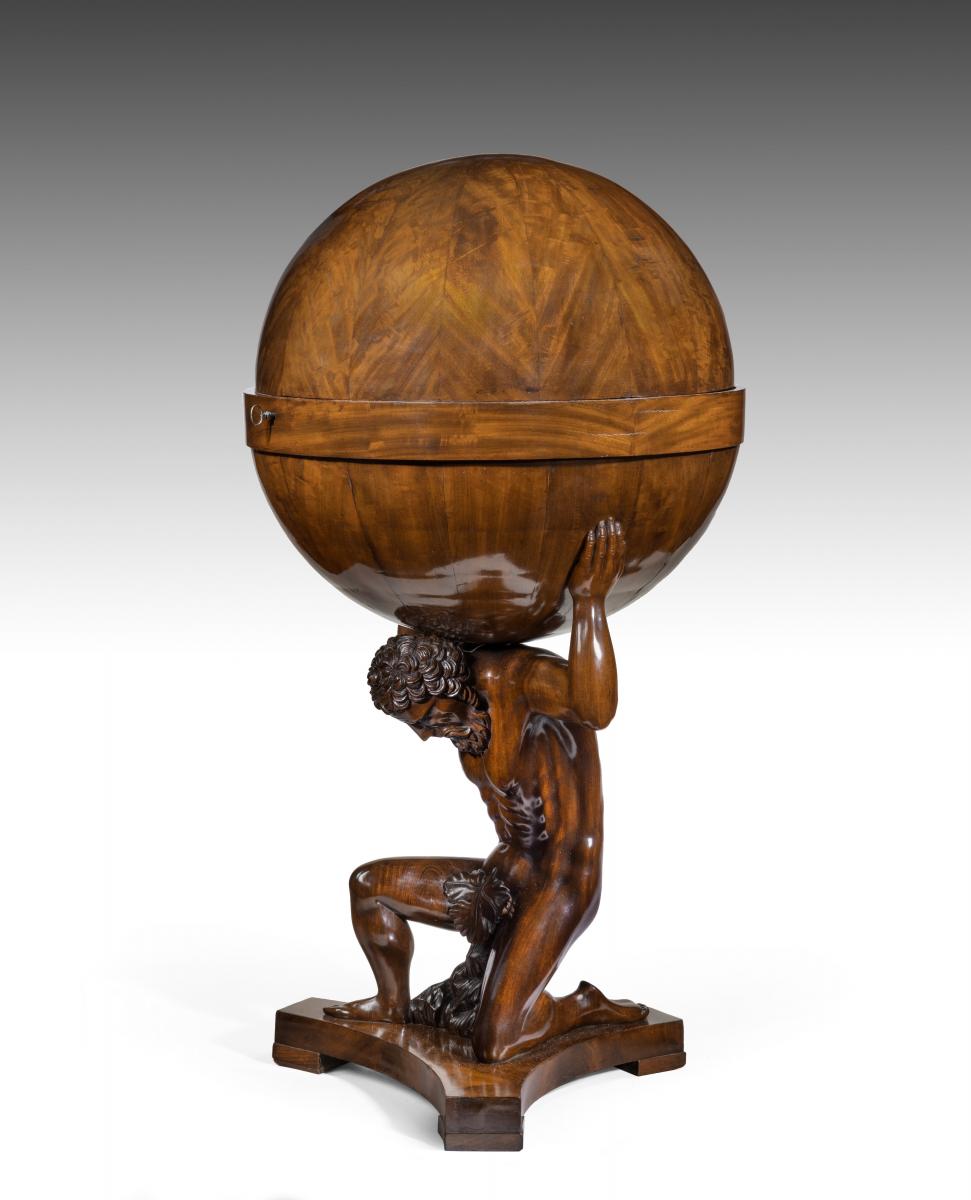
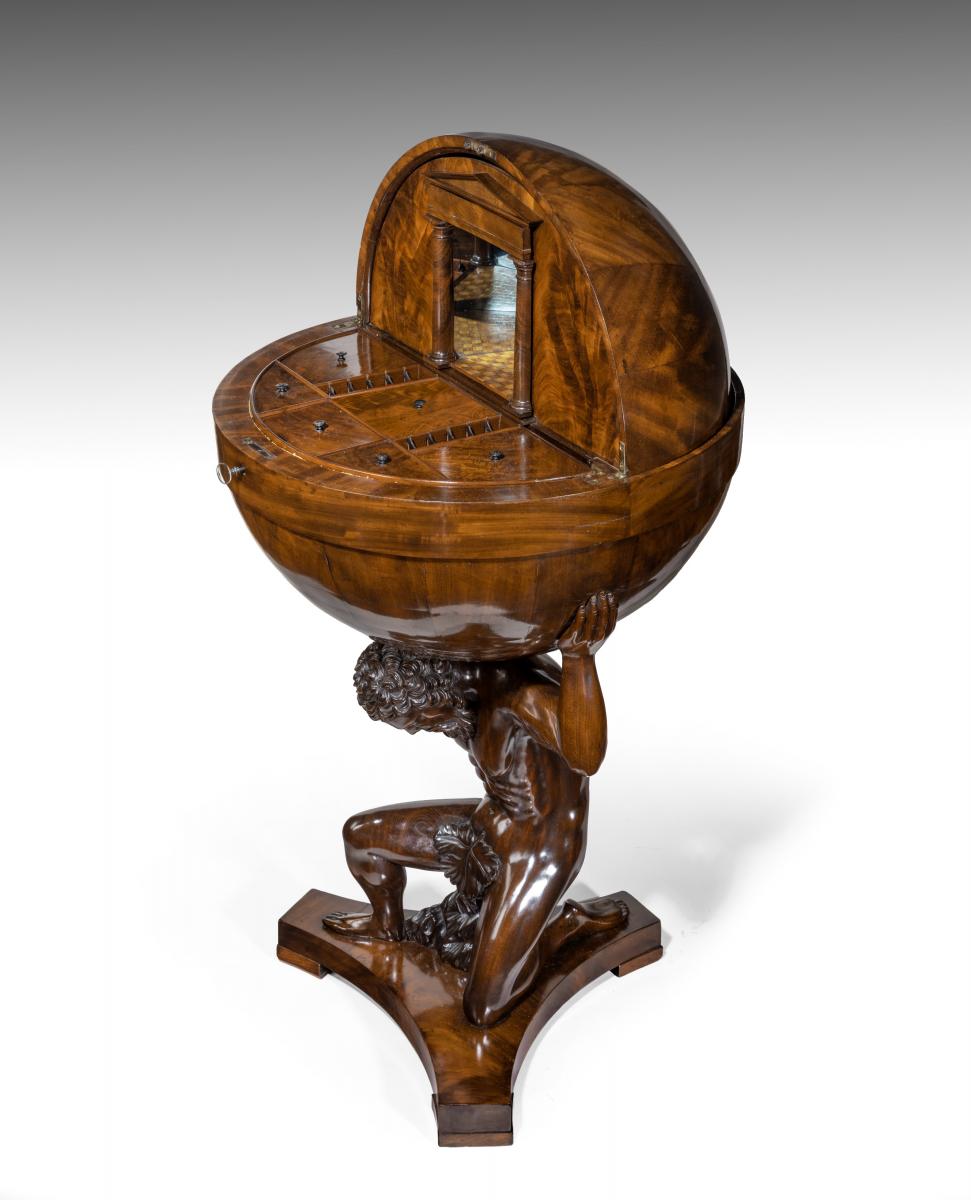
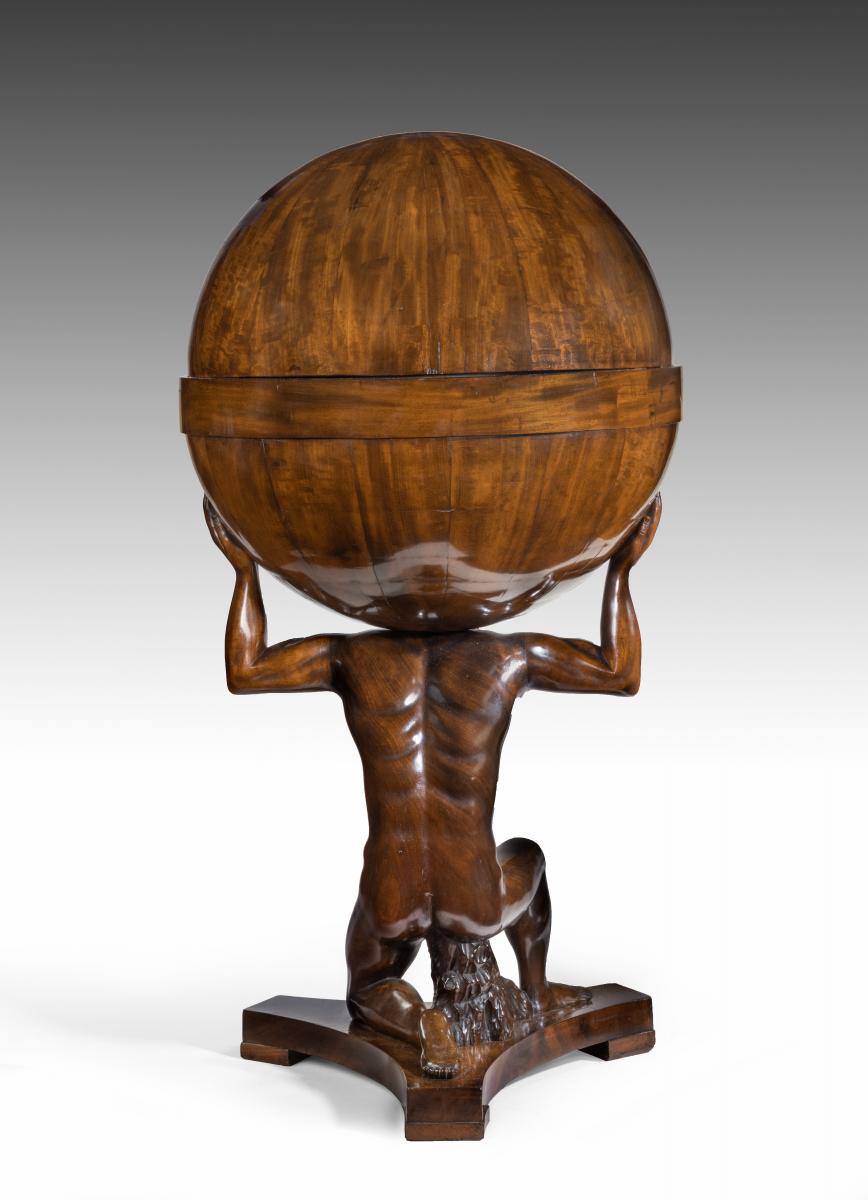
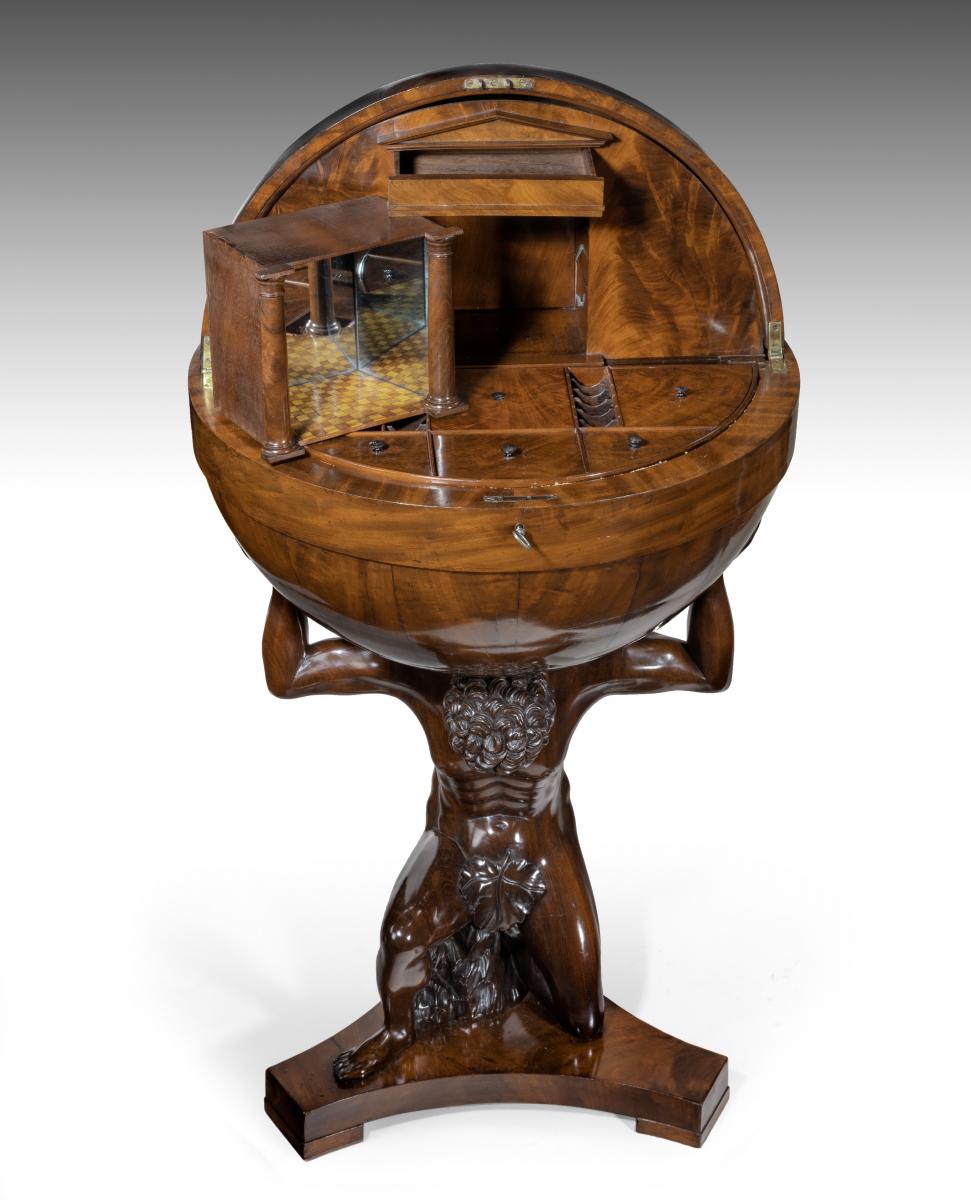
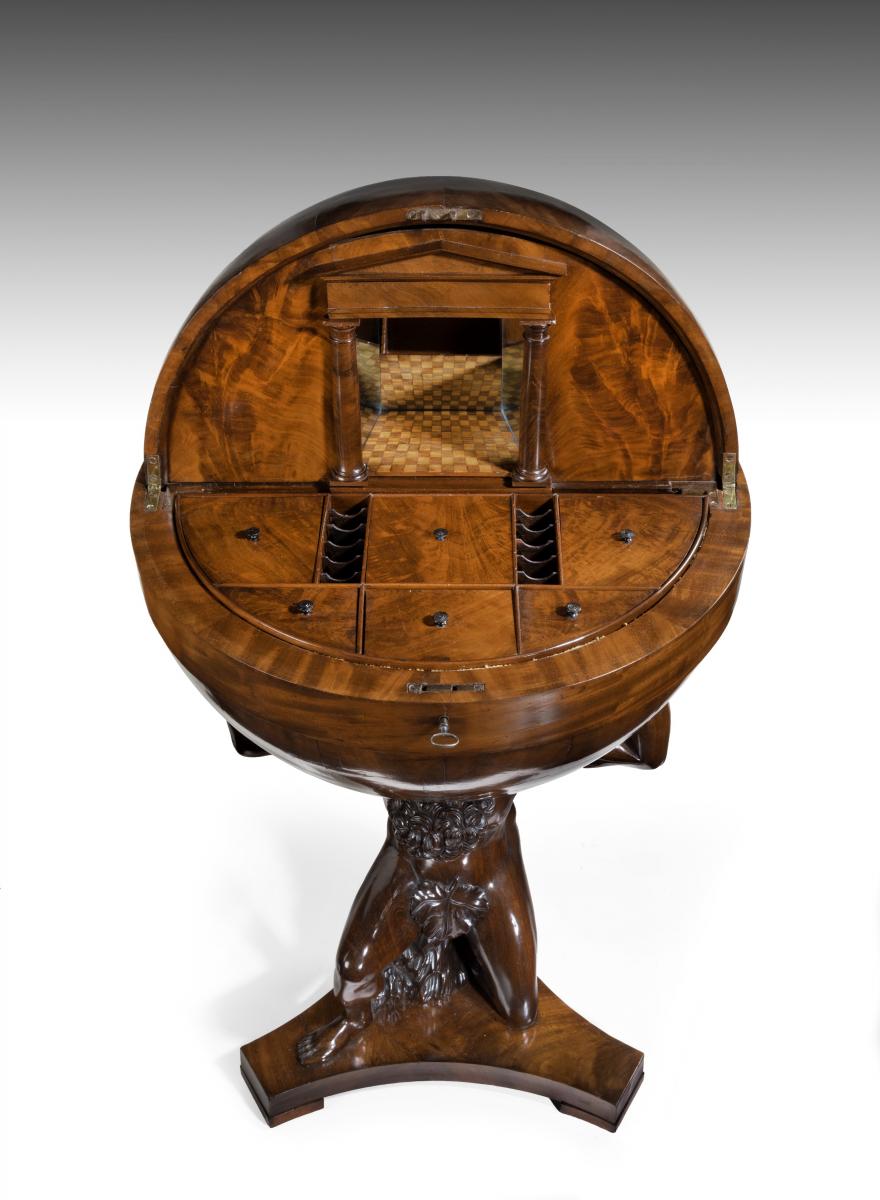
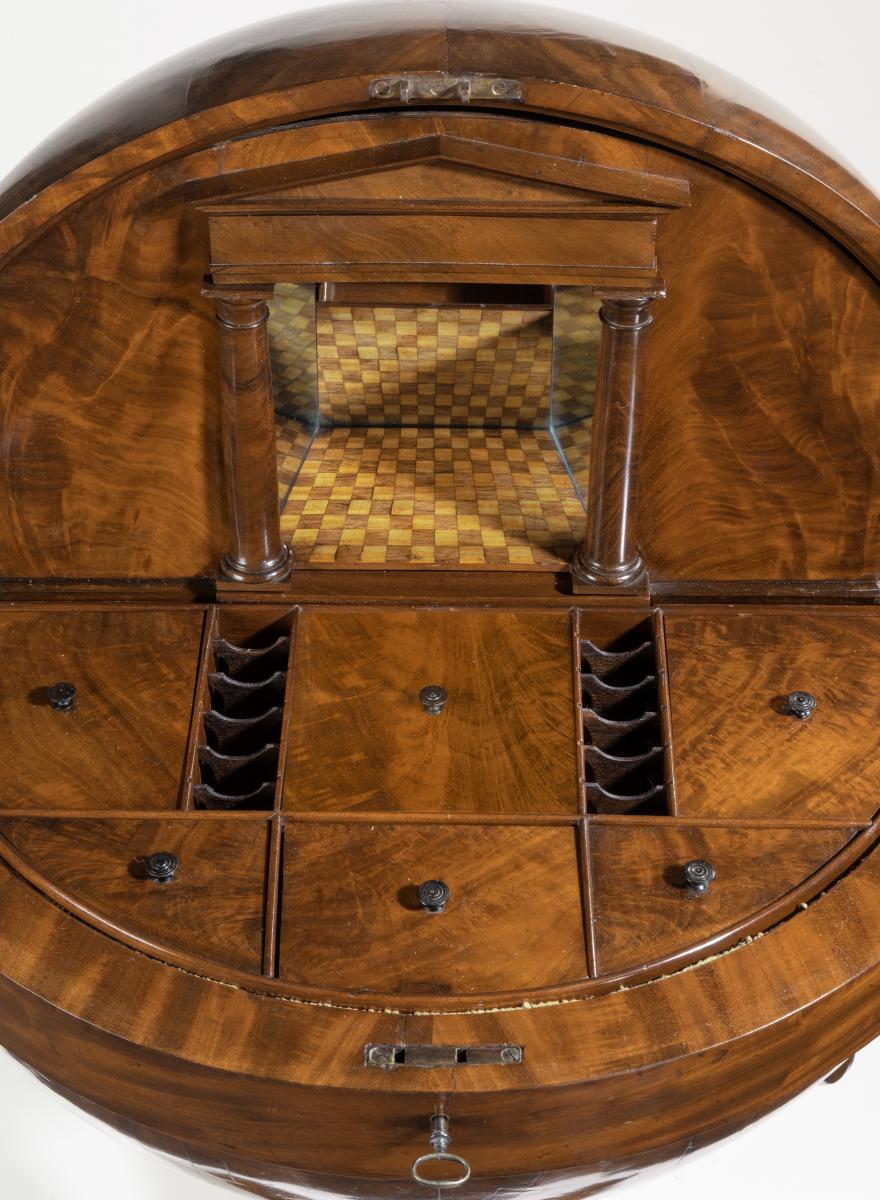
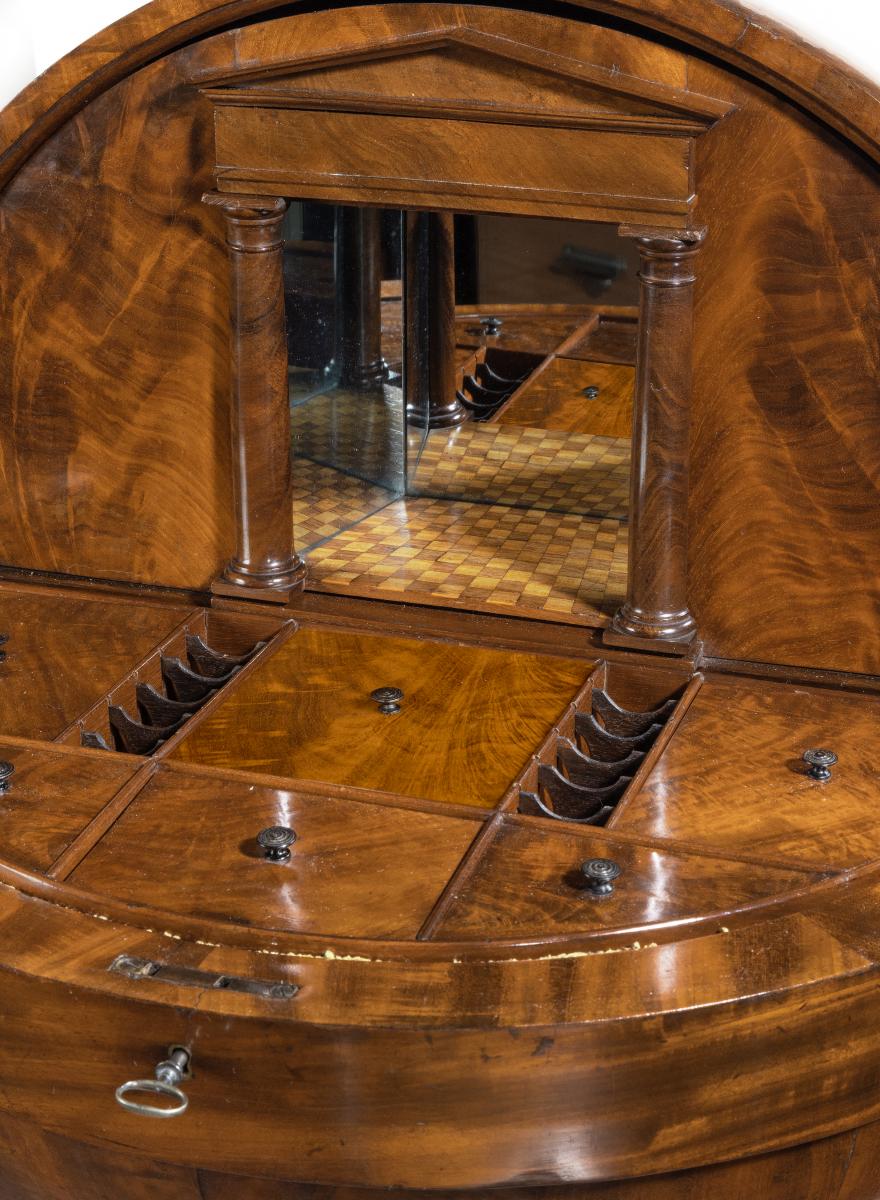
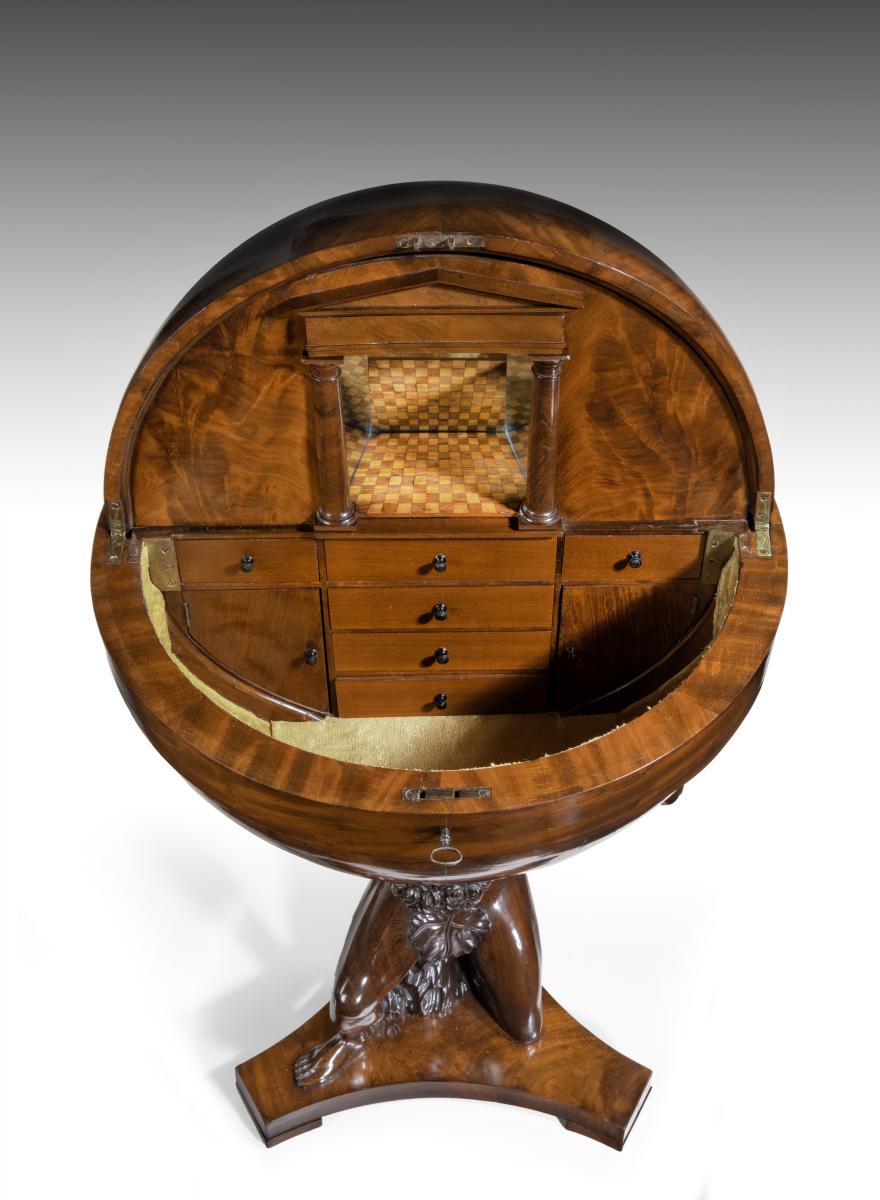
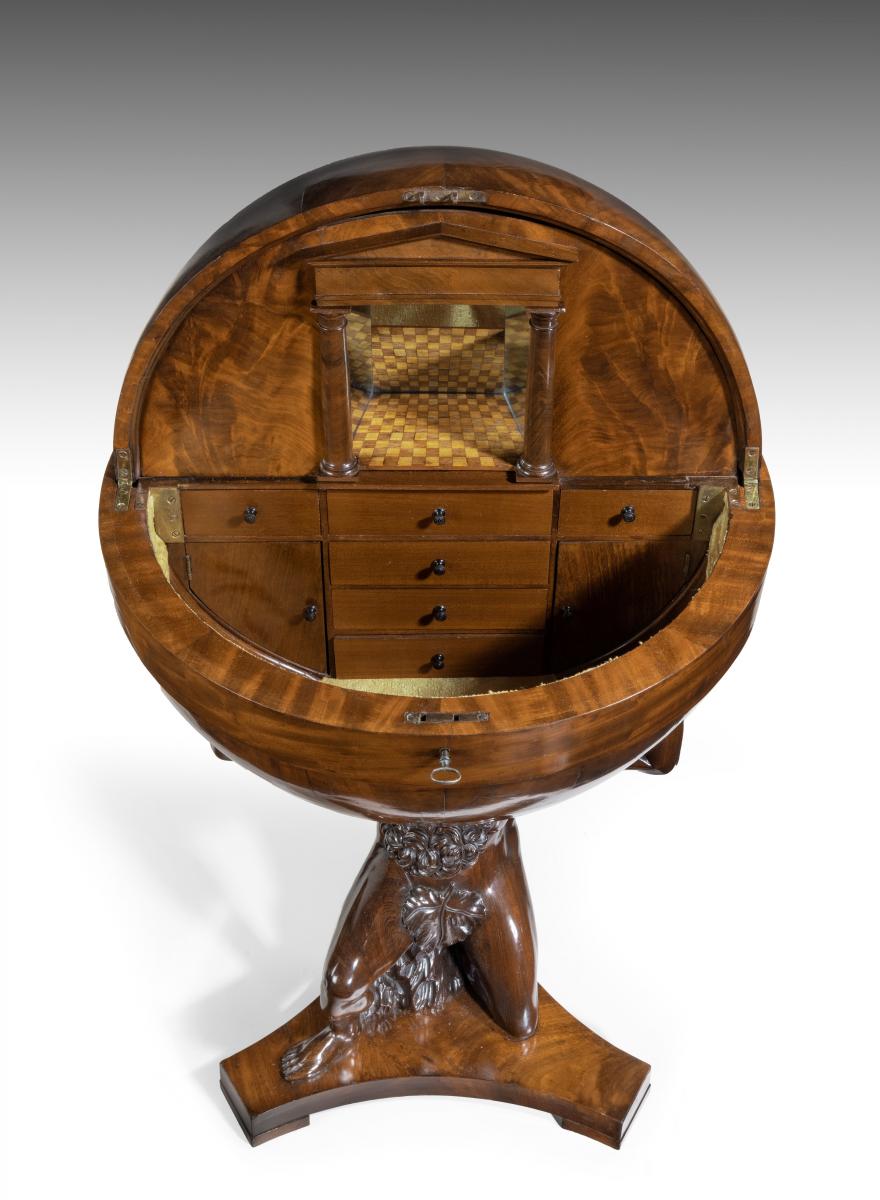
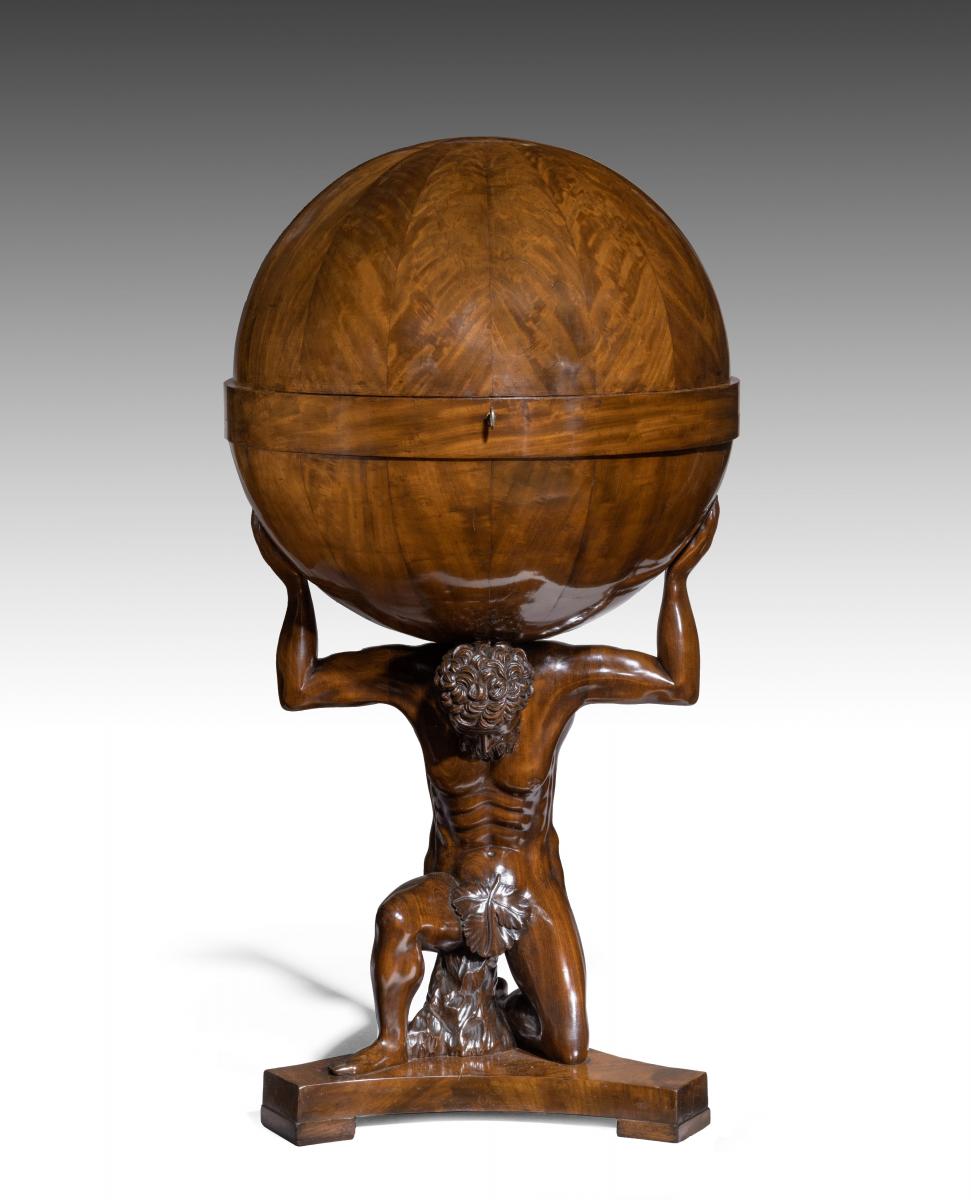
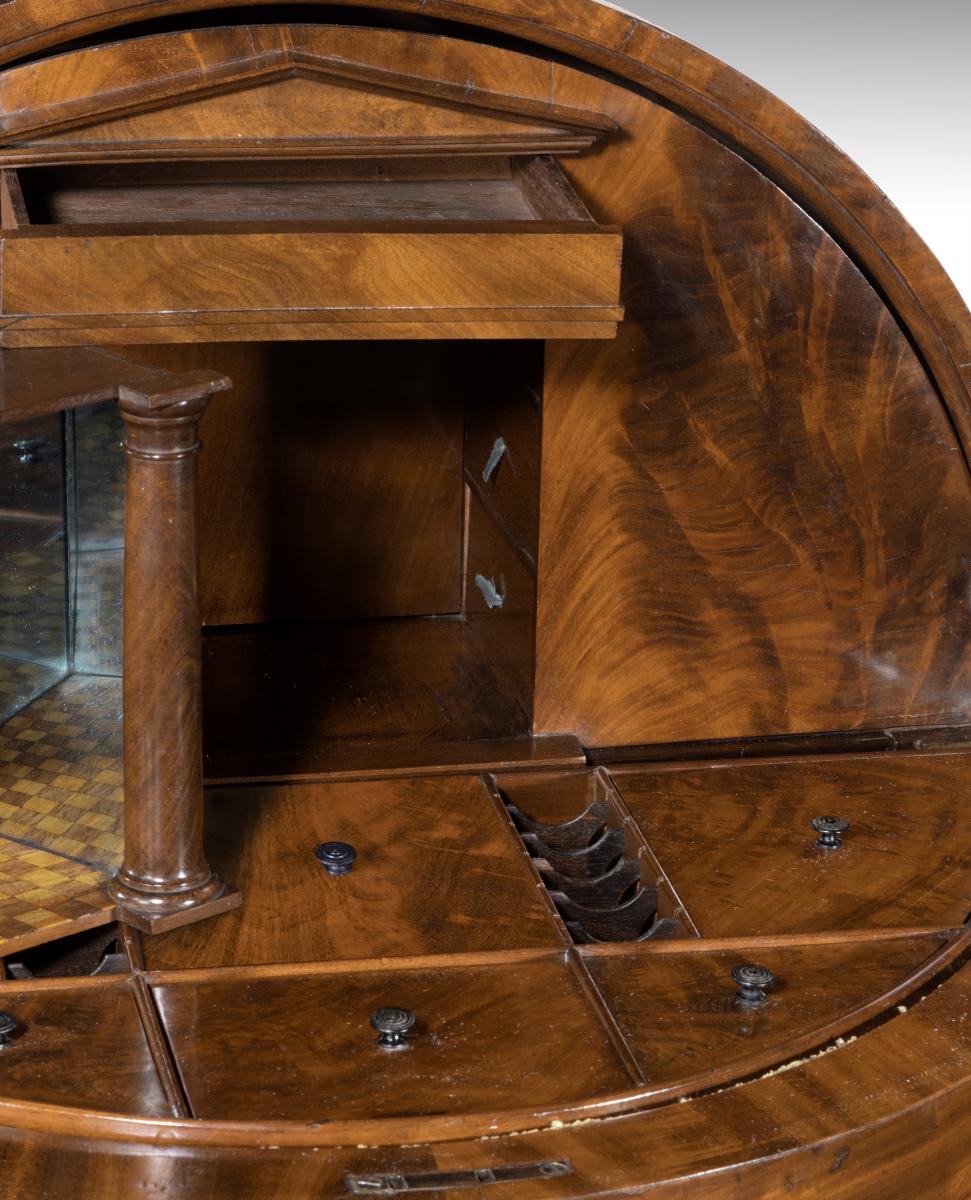
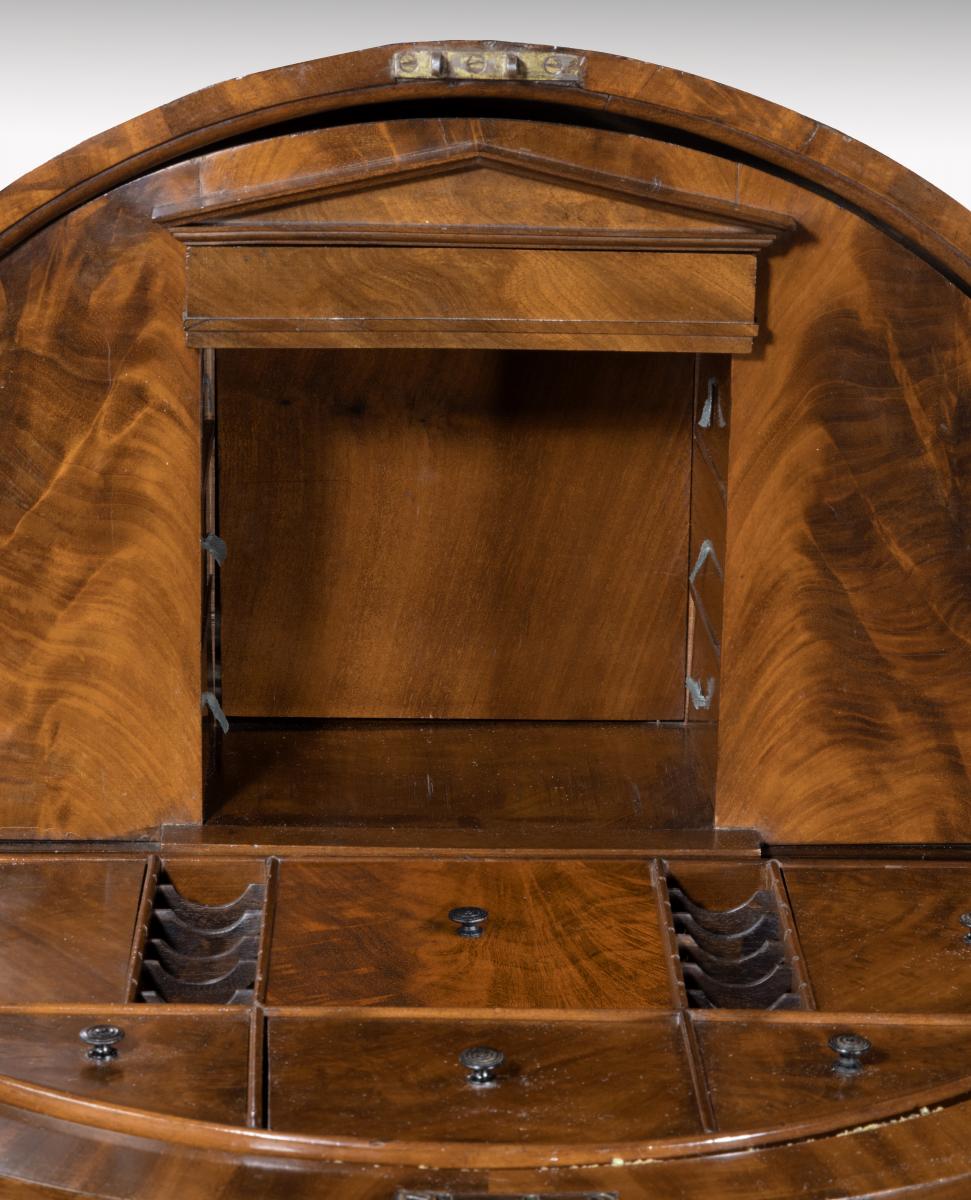
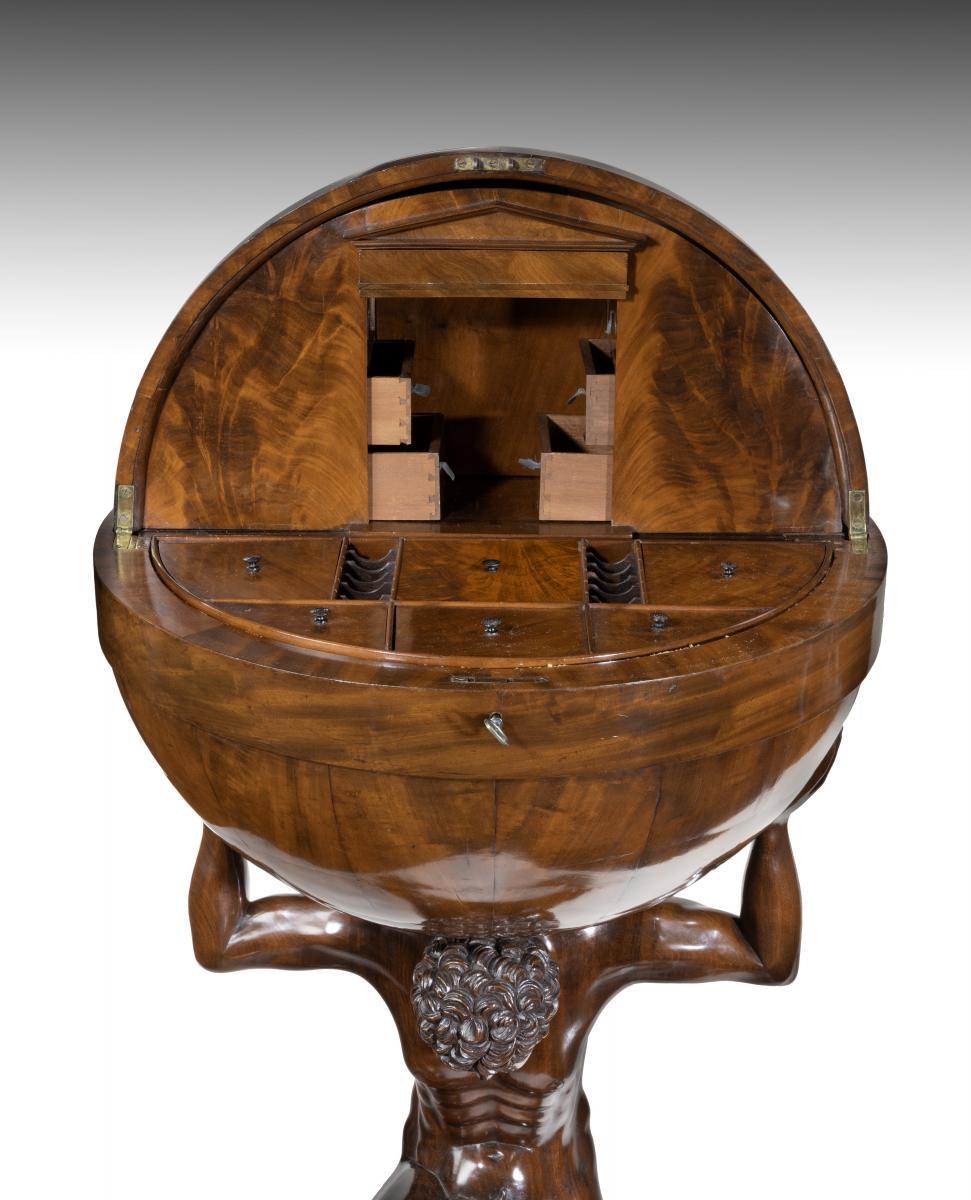
This object is eligible for a Certificate of BADA Provenance
The BADA Standard
- Since 1918, BADA has been the leading association for the antiques and fine art trade
- Members are elected for their knowledge, integrity and quality of stock
- Our clients are protected by BADA’s code of conduct
- Our dealers’ membership is reviewed and renewed annually
- Bada.org is a non-profit site: clients deal directly with members and they pay no hidden fees
Biedermeier Mahogany Globe-Form Work Table or Globustisch.
NORTHERN GERMANY, circa 1820.
Provenance:
H. R. H. The Duchess of Kent, Coppins, Iver, Buckinghamshire.
Frank Partridge, Inc., New York.
Walter P. Chrysler, Jr. Collection.
Sold Parke-Bernet Galleries, New York, 29-30 April 1960, lot 110.
Private Collection, USA.
The retractable globe-form top with segmented veneer panels opening to reveal an interior fitted with a pedimented prospect niche with a frieze drawer, mirrored sides and a perspectival parquetry floor, which is spring-loaded and can be slid open to reveal a secret panel and six side drawers; above a tray with a divided central section and lidded compartments. The whole lifting to a well, backed by drawers and hinged cupboard doors. Supported on the kneeling figure of Atlas, with a tripartite plinth and block feet.
The challenging mechanical elements of this work table showcase the expertise of a skilled master craftsman. The ‘Globustisch’ form was a highlight of the craftsmen working in Vienna during the Biedermeier period (1815-1848). They were hard to construct and, as a result, few were made. This form of table contributed to the training of designers and considerably more designs exist than executed final pieces. The use of a human figure as a supporter, requiring sculptural as well as cabinet making skills, is exceptionally rare.
In his essay ‘A Regency Sewing and Writing Table by Morgan and Sanders’ James Parker comments that, whilst convertible furniture had been in use for centuries - ‘furniture with “folding action” was known to the Eqyptians, who sat on folding stools and slept on collapsible beds in the second millennium before Christ’, little demand for this type of furniture existed in England until the outset of the nineteenth century when ‘convertible furniture came into its own’ (James Parker, ‘A Regency Sewing and Writing Table by Morgan and Sanders’ in ‘The Metropolitan Museum of Art Bulletin’, pp.125-6). The firm Morgan and Sanders was one of the principal manufacturers of such furniture, and a hand-coloured print depicting Morgan and Sanders’ ‘ware-room’, reproduced in Rudolph Ackermann’s ‘The Repository of Arts, Literature, Commerce, Manufacturers, Fashions and Politics’ in August 1809, shows ‘Pitt’s Cabinet Globe Writing-Table’ displayed prominently, standing against a pier just left of centre (The Metropolitan Museum of Art; Accession Number: 42.74.2(2); https://www.metmuseum.org/art/collection/search/399889). For marketing purposes Morgan and Sanders named this piece of furniture after William Pitt, the popular statesman who died in 1806.
An engraving depicting ‘Pitt’s Cabinet Globe Writing Table’ appeared in Rudolph Ackermann’s ‘Repository’ in 1810, and is reproduced in ‘Ackermann’s Regency Furniture & Interiors’, p.46, Plate 12. The engraving shows the different ‘stages’ of the Globe Writing Table. The description alongside the image states that the table ‘is one of the grandest and most elegant pieces of furniture that ever decorated the modern library. It forms externally a handsome globe, which may be constructed of any size. In this form it is represented in fig. 1. In fig. 2. it is seen with two of the quarters let down, in which state it composes a circular writing-table. Fig. 3 shews the interior of the lower part fitted up with drawers, pigeon-holes, &c. for papers, and with only one quarter of the globe let down…. This writing table, which must be acknowledged equally convenient and superb, is likely to become an indispensible appendage to the library of every person of taste in the fashionable world. It has already obtained the patronage of her Majesty and the Royal Family, who are ever the foremost to encourage real merit. Her Royal Highness the Princess Augusta has very recently ordered one of the inventors [Messrs. Morgan and Saunders, of Catherine-street, Strand.], and it was from this that our drawings were made.’ (‘Ackermann’s Regency Furniture & Interiors’, Text by Pauline Agius, Intro. by Stephen Jones (The Crowood Press, 1984), p.47).
Martina Kirfel, in her article ‘Wiener Globus-Tischchen der Biedermeier-Zeit: Die Welt als Nähkästchen’, comments: ‘Outside sky ball, inside sewing box - this is what one of the most unusual of Biedermeier’s small furniture looks like’ [NB. Kirfel’s article was written in German and so the quotations here are a translation]. Predominantly produced in Vienna, Kirfel observes that this form of Globe Table was developed before 1820 and that the notion of spherical furniture originated in England. James Parker comments that: ‘Small spherical inkstands of the sort produced by English silversmiths in the 1790s may have supplied the idea for this table to a little-known inventor, George Remington, who in December 1807 took out a fourteen-year patent on a “globe table ... made with two moving parts or quarters which work upon hinges.' A few months later the rights to manufacture this invention were bought by Morgan and Sanders, who had produced a working model of Remington’s patent by 1809, when the first article appeared in the Repository.’ (James Parker, ‘A Regency Sewing and Writing Table by Morgan and Sanders’, p.128).
Kirfel observes that, unlike its Viennese descendants, the English Globe Table could still be used as a globe. She reproduces a design for a globe-shaped sewing table which is housed in the collection of MAK – Österreichisches Museum für angewandte Kunst/Gegenwartskunst in Vienna in her article (Inventory number: KI 7710-15; https://sammlung.mak.at/en/collection_online?id=collect-140199). This freehand drawing is by Karl Schmidt whose Drawing School, founded in the 1820s, gained a significant reputation. She describes the drawing as documenting ‘the Viennese type of Globe Table in its purest form’ (Martina Kirfel, ‘Wiener Globus-Tischchen der Biedermeier-Zeit: Die Welt als Nähkästchen’, 1986).
Another freehand drawing in the MAK’s collection, originating from Vienna in circa 1800, shows seven different tables – with views from above and below (Inventory number: KI 7710-108; https://sammlung.mak.at/en/collection_online?id=collect-142112). Both this and the drawing above illustrate Kirfel’s comment that the Viennese Globe Tables could not be used as a globe, but were spherical tables. In both the designs the tables’ ball-shaped body rests on three tall outwardly curved legs.
Kirfel observes that most of the Viennese Globe Tables were raised on three legs; and that globe tables supported by a kneeling figure are rare. She illustrates two examples of globe tables with human figures as supporters raised on a tripod base in figures 4 and 5; and a bronze sculpture of Atlas supporting a globe in figure 6. Whilst the interior of these three tables is very similar to the designs above with three legs, the human figure supporters are unusual.
The source for this kneeling figure of Atlas carrying the world on his shoulders is likely to be the Ancient Roman statues of Atlas holding the celestial sphere, such as the ‘Farnese Atlas’ in the collection of the Museo Archeologico Nazionale di Napoli in Naples. The Farnese Atlas is the oldest known representation of the celestial sphere, and is believed to be a 2nd Century Roman copy of a Greek sculpture.
The craftsman who made our Globe-form Work Table chose to portray a kneeling figure of Atlas supporting the weight of the celestial sphere, demonstrating an intertwining of human and heaven. Mythology was seen as a way of making sense of the natural world through storytelling. Atlas was a Titan who, following Zeus’s victory against the Titans, was condemned to stand on the edge of the Earth and to hold up the celestial heavens on his shoulders for eternity.
In ‘English Furniture 1760-1900’ Geoffrey Wills illustrates the table, describing it – erroniously – as a version of ‘Pitt’s Cabinet Globe Writing Table’, also fitted as a sewing table, with the support in the form of Atlas. Wills dates the table as circa 1810 (Geoffrey Wills, ‘English Furniture 1760-1900’ (Guinness Superlatives Limited, 1971), fig.156, p.197).
Comparators: The Metropolitan Museum of Art has a smaller Austrian sewing and writing table in its collection which was made in Vienna c.1815–30 (Accession Number: 62.107a–f; https://www.metmuseum.org/art/collection/search/202629). This table is made using mahogany, cherry rosewood, satinwood, oak, brass, leather and alabaster.
Our work table was formerly in the collection of the Duchess of Kent, née Princess Marina of Greece and Denmark, a member of the British Royal Family. Another work table, still in the Royal Collection, may have belonged to Queen Charlotte, the wife of George III. It is believed that the table was purchased by Queen Mary between 1921 and 1931.
An Austrian Globe-Shaped Work Table - which was made in Vienna in circa 1820 - is in the collection of the Art Institute of Chicago. This table is made using fruitwood and fruitwood veneers and its interior is decorated with ebonising and gilding.
Another Austrian Globe Table or ‘Globustisch’, catalogued as having been made between 1800-25, is in the collection of the Milwaukee Art Museum; M2001.191. The cataloguing explains that: ‘cultural life centered primarily in the home during the Biedermeier period, and specialised tables such as this one were designed to hold a woman's sewing implements in tiny interior drawers’; http://collection.mam.org/details.php?id=3132.
Dimensions
Width: 53 cm Height: 126.5 cmStock number
6703The BADA Standard
- Since 1918, BADA has been the leading association for the antiques and fine art trade
- Members are elected for their knowledge, integrity and quality of stock
- Our clients are protected by BADA’s code of conduct
- Our dealers’ membership is reviewed and renewed annually
- Bada.org is a non-profit site: clients deal directly with members and they pay no hidden fees


